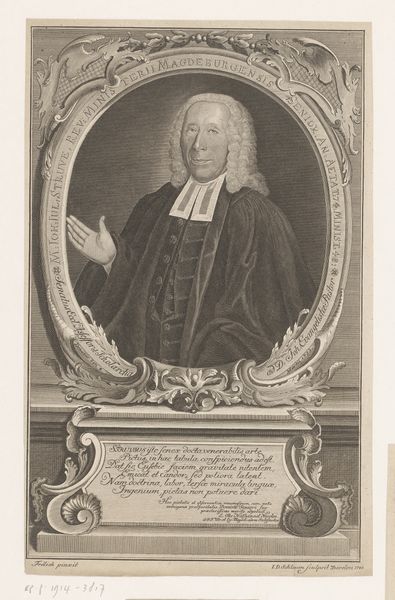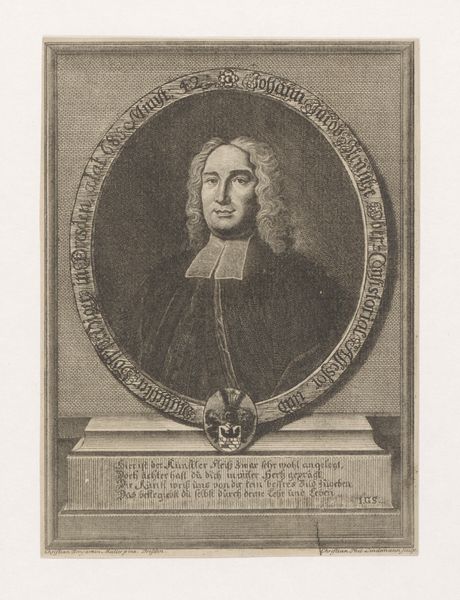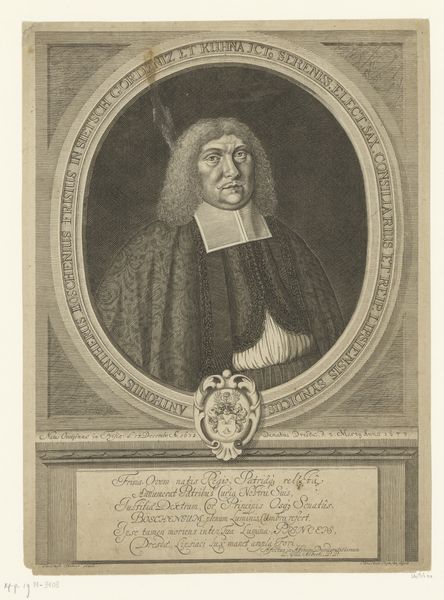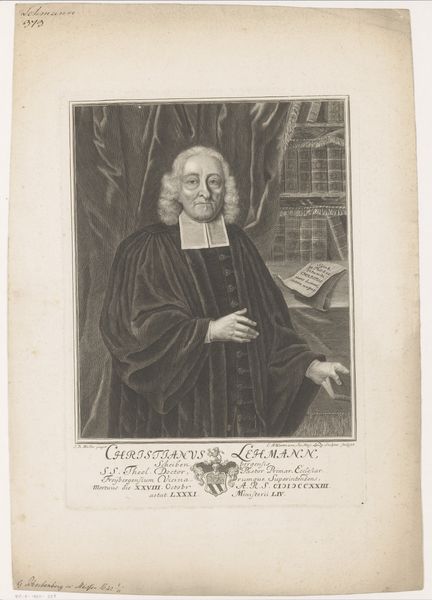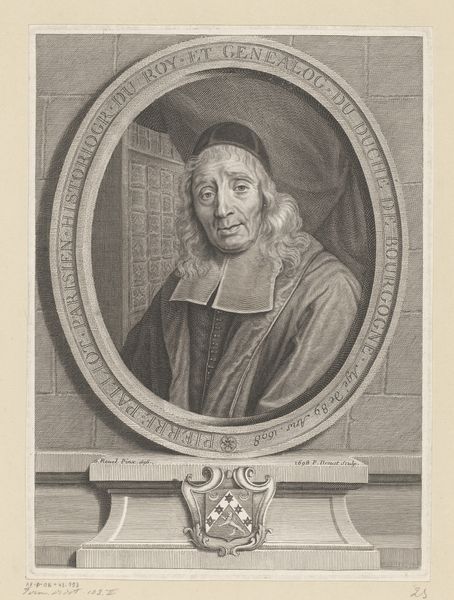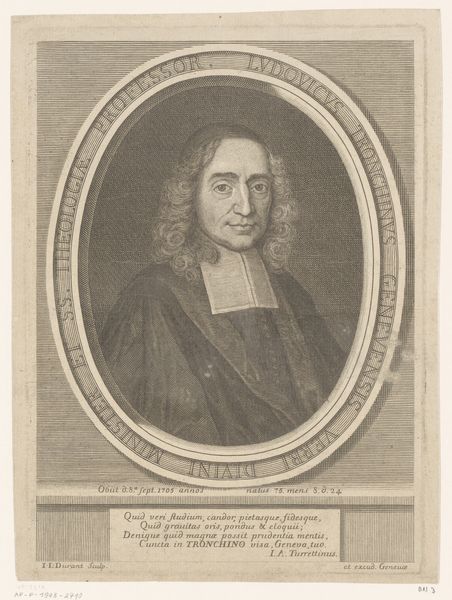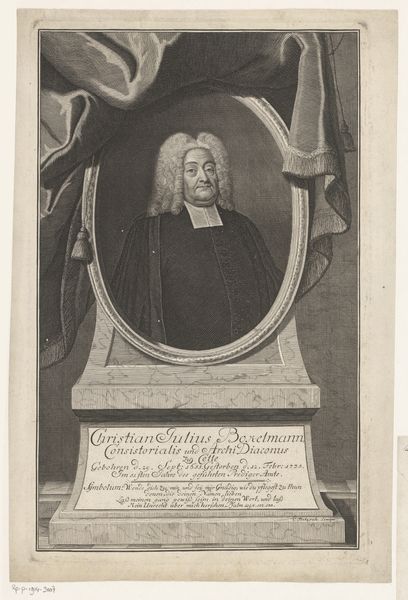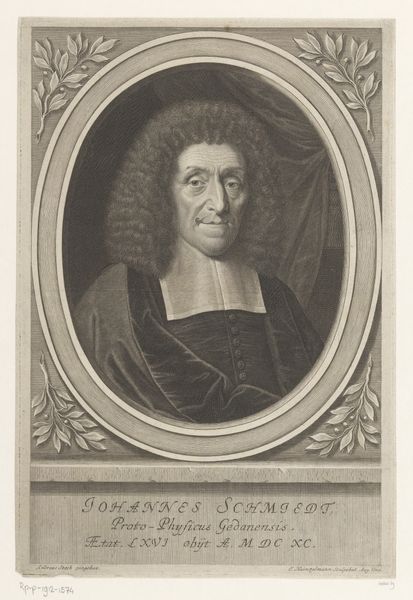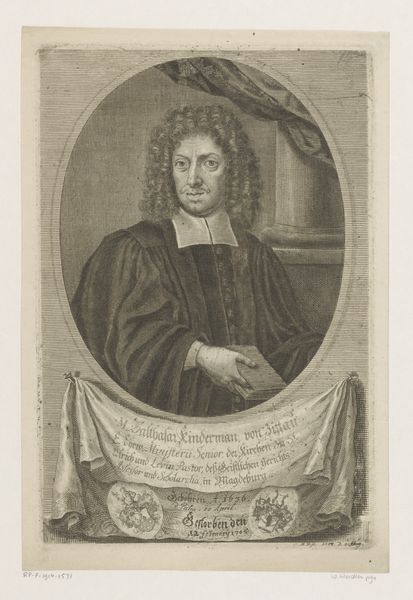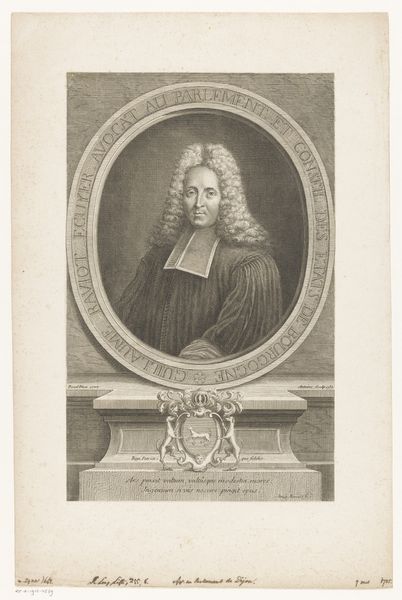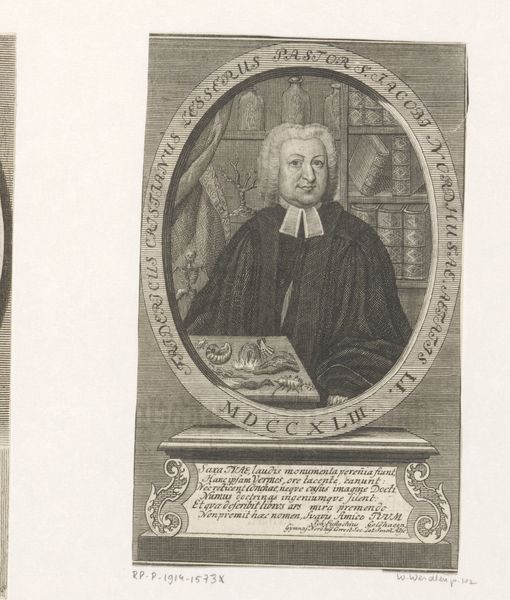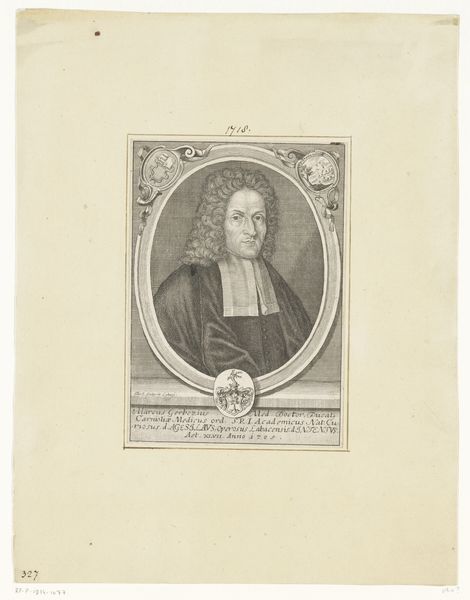
print, engraving
#
portrait
#
baroque
# print
#
charcoal drawing
#
portrait drawing
#
engraving
Dimensions: height 340 mm, width 238 mm
Copyright: Rijks Museum: Open Domain
Editor: Here we have Gabriel Spitzel's 1732 engraving, "Portret van Jacob Wanner," housed at the Rijksmuseum. The formality and precision of the lines really strike me, and there's almost a weightiness to the subject. What can you tell me about what's going on here? Curator: Look closely. Note how the Baroque era adored visual rhetoric. Jacob Wanner isn's simply present; he's *presented*. His vestments, the engraved text below, his carefully styled wig: all symbols, telling a visual story to ensure that Wanner, the subject, occupies not merely a pictorial space, but also a cultural one. What feelings do these symbols evoke? Editor: It definitely feels…important. Authoritative, even. But are these symbols meant for a specific audience of the time, or do they still carry the same weight today? Curator: An astute observation! Time shifts the symbolic landscape. While then, the details would immediately signal Wanner’s status within his community and perhaps some insight into his character, today, some might require a little historical unpicking to grasp fully, or maybe a more sensitive understanding. Editor: So the symbols’ meanings evolve. It's fascinating to think about how different eras "read" an image like this. Curator: Exactly! Consider how power is visually encoded and presented in different eras. These visual cues are not arbitrary, but powerful markers of cultural memory, continually being re-interpreted. Editor: I guess that means every viewing is really an act of translation in some way. Curator: Indeed. It reminds us that meaning isn't fixed. Images echo through time, transforming within new contexts and under new eyes.
Comments
No comments
Be the first to comment and join the conversation on the ultimate creative platform.
